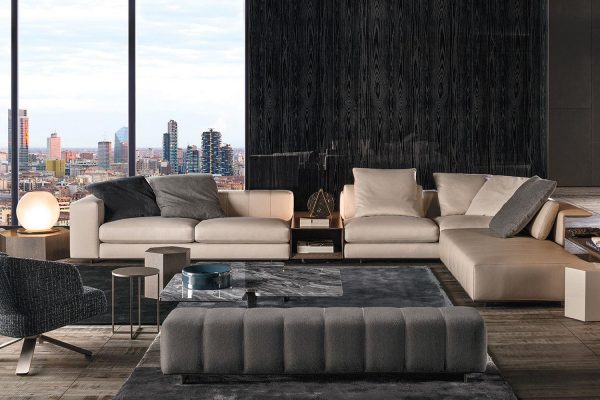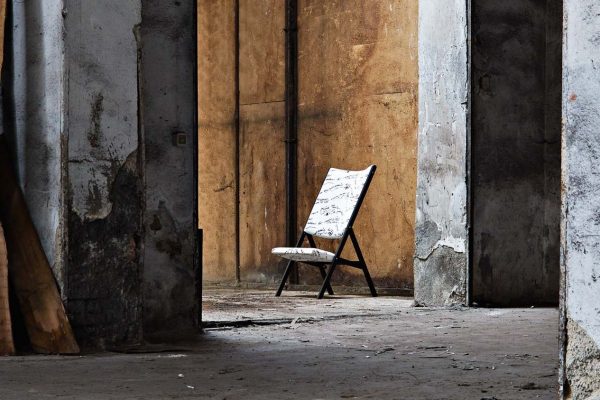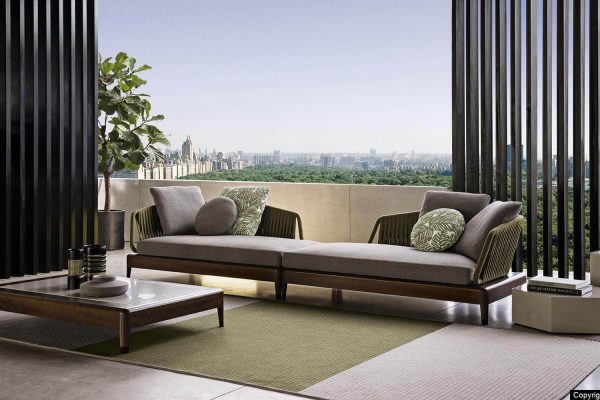Modern fireplaces depart from the concept of the simple source of heat, which was very popular in the past, presenting themselves as a real piece of design furniture, capable of transforming the living room into an elegant and cozy place thanks to a balanced mix of aesthetics, functionality and comfort.
The innovative materials and minimalist lines resorted to today make modern fireplaces capable of adapting to any furnishing style, from contemporary to industrial.
Discover how to elevate the design of your living room, the various installation options, and the most fashionable materials and coatings-key elements to consider when choosing the ideal modern fireplace design that will best enhance your space.
Modern Fireplaces: A Synthesis of Elegance and Contemporary Design
Modern fireplaces have become a real trend in interior design, as they are now considered ideal elements for combining elegance and functionality within a room.
We are not talking about the traditional models: deprived of their classic function due to the spread of common heating systems, these furnishings have evolved by focusing on clean lines, innovative materials, and a design conceived to blend harmoniously with their surroundings.
Unlike old-fashioned fireplaces, which often focused solely on the heating function, modern fireplaces are designed to be true works of art that add character and personality to the living room.
A modern designer fireplace thus stands as a practical solution useful for adding warmth and atmosphere to spaces in an original way.
A modern wood-burning fireplace, for example, offers the pleasure of a natural fire and a touch of more rustic style, while gas or electric models provide quick heat and easier installation, with a more minimalist yet elegant aesthetic.
Whether you’re looking for a elegant and modern industrial-style fireplace or a minimalist model, there are so many options when visiting one of SAG’80’s showrooms.
Cladding for Modern Fireplaces: Materials and Style Ideas
A key aspect that you should not overlook when evaluating a modern fireplace is its cladding. Choosing the right modern fireplace cladding affects not only the aesthetics, but also the functionality and durability of the fireplace itself. Among the most popular materials you will find:
- Stone: Modern stone fireplaces are a timeless choice, capable of giving a rustic yet sophisticated look. Stone, due to its characteristics, goes perfectly with various styles of decor, from the most classic to the most contemporary. If you want to create a living room with a strong and natural character, you could opt for a matte or polished finish.
- Steel and Iron: If you are looking for a more industrial style, modern steel fireplaces are an excellent choice. These materials give the fireplace a clean, minimalist look that is popular in today’s lofts or spaces with a minimalist design.
- Marble and Granite: Marble, on the other hand, is a perfect option for those who want a touch of luxury. With a modern fireplace with marble cladding you’ll give the entire room elegance and sophistication, but you’ll be required to be more careful about maintenance than with other materials.
- Ceramic and Glass: Ceramic or glass claddings are ideal for those looking for a fireplace with a modern design that can propel you into the future. These materials can be used to create a fireplace that appears to float in the air, with a smooth, shiny surface that reflects light and amplifies the visual effect of the fire.
The choice of cladding for modern fireplaces also depends, of course, on the rest of your living room decor If your living room has a minimalist décor, a modern fireplace design with a metal or light stone finish might be the ideal combination. If, on the other hand, you prefer a more cozy and traditional setting, a modern wood-burning fireplace with stone or marble cladding will add a touch of warmth and style.
Wall-Mounted or Corner Modern Fireplace: Which to Choose?
The location of the fireplace is a crucial aspect that will help you optimize your living room space and design. Two of the most common options are the modern wall-mounted fireplace and the modern corner fireplace, each with its own advantages.
- Camini Moderni a Parete: I camini moderni a parete sono perfetti per i soggiorni che dispongono di pareti libere. Here the fireplace can play the role of a central element of the decor. Placing the fireplace on the wall allows you to make the most of the available space, while also creating an eye-catching focal point. This type of installation is ideal if you have a spacious living room and want a sleek, modern fireplace that blends seamlessly with the rest of the decor.
- Camini Moderni ad Angolo: Il camino moderno ad angolo rappresenta una soluzione eccellente per i soggiorni più piccoli o quelli con una disposizione irregolare. By placing it in the corner of the room, you can make the most of the space and manage to distribute heat more evenly. In addition, the ability to view the fire from multiple angles will help create a warm and cozy atmosphere throughout the room.
These are great solutions for decorating the living room, but the choice depends mainly on the layout of the space and the aesthetics you want to achieve.
Modern Living Room Decor with Fireplace: Design Tips
Integrare un camino moderno nel soggiorno richiede una progettazione attenta, che tenga conto dello stile complessivo dell’ambiente. Modern fireplace furnishings in a living room must be balanced, so that the fireplace becomes the central point without overpowering other elements.
First, you will need to choose a fireplace that matches the living room decor. In case this room has a minimalist style, a designer fireplace for modern living room, featuring essential lines and steel or light stone finishes will be perfect.
If you are looking for a particularly unconventional aesthetic, you might consider models by Antonio Lupi. These fireplaces upend the concept of the domestic hearth by bringing the flame outside the body of the fireplace and removing all the superfluous to focus attention on the role of the fire.
If, on the other hand, you prefer a warmer, more rustic look, a modern wood-burning fireplace with stone or marble surrounds might be the right choice.
In a modern living room with a fireplace, it is also essential to strike a balance between warm and cool elements. A sleek, modern fireplace with metal or stone finishes can be accompanied by wood furniture, soft fabrics, and warm lighting to create a harmonious and balanced environment.
Finally, you can take advantage of the fireplace as a design element, for example by adding a shelf above it for displaying decorative items.
As you will have realized by now, choosing a modern fireplace for the living room is a great way to combine functionality and design. Whether it is a wall or corner model, or a modern stone fireplace, the fireplace represents an element capable of warming and creating a cozy and familiar atmosphere, to immediately convey a feeling of home.
Book a consultation with SAG’80 and discover the best modern fireplaces: contemporary design, elegant cladding, wall or corner models.



